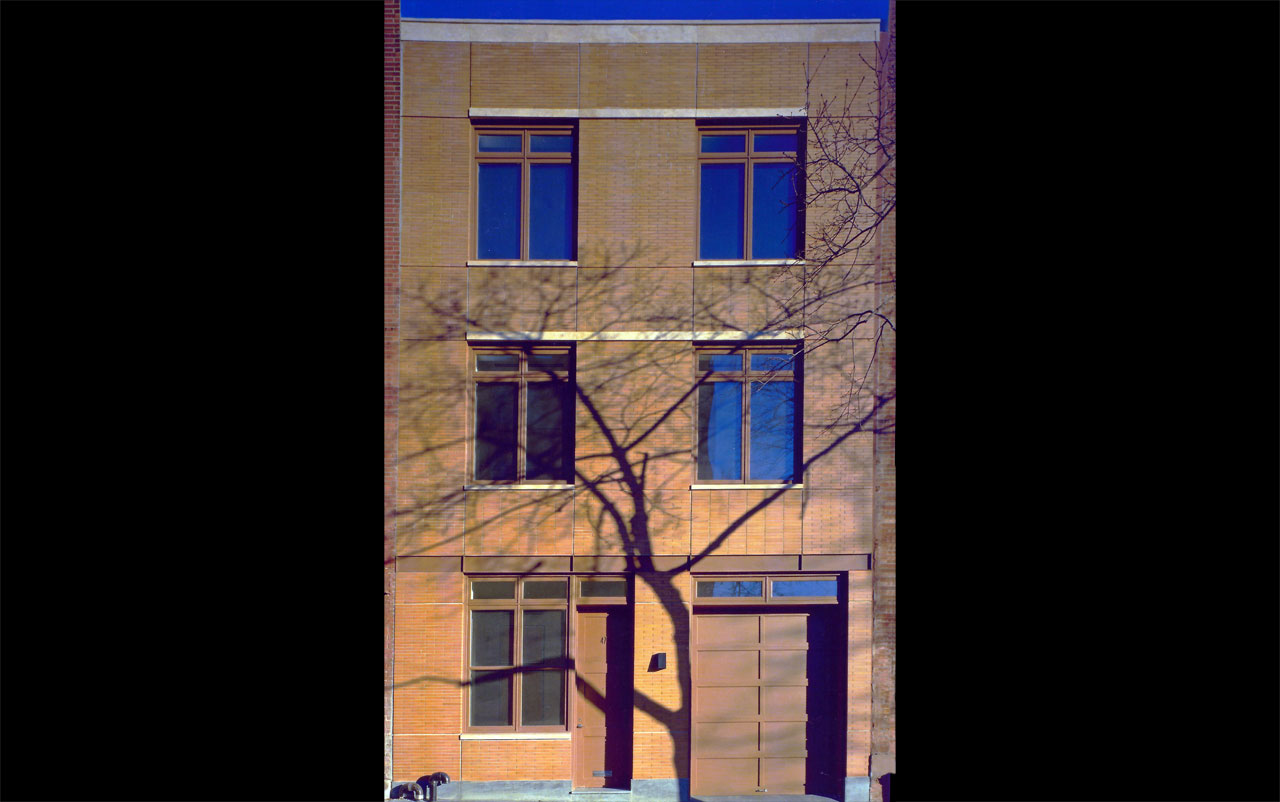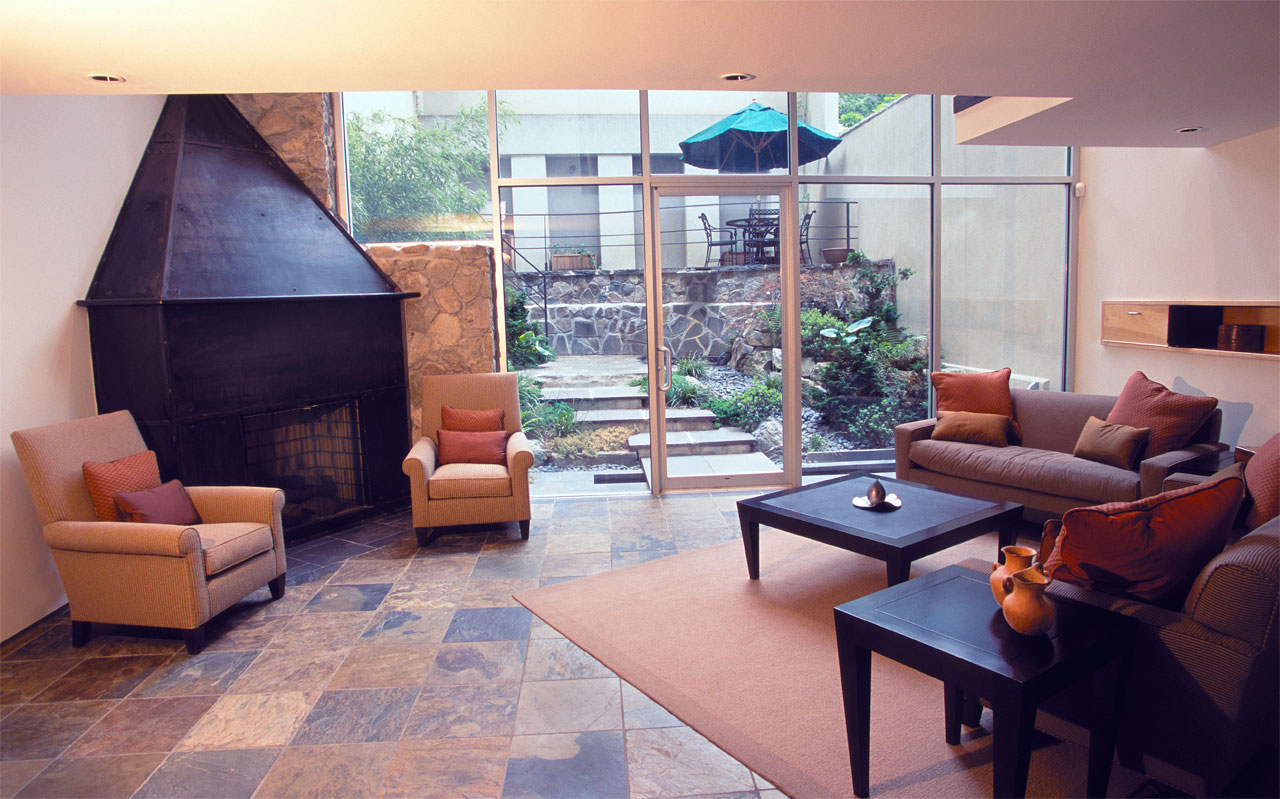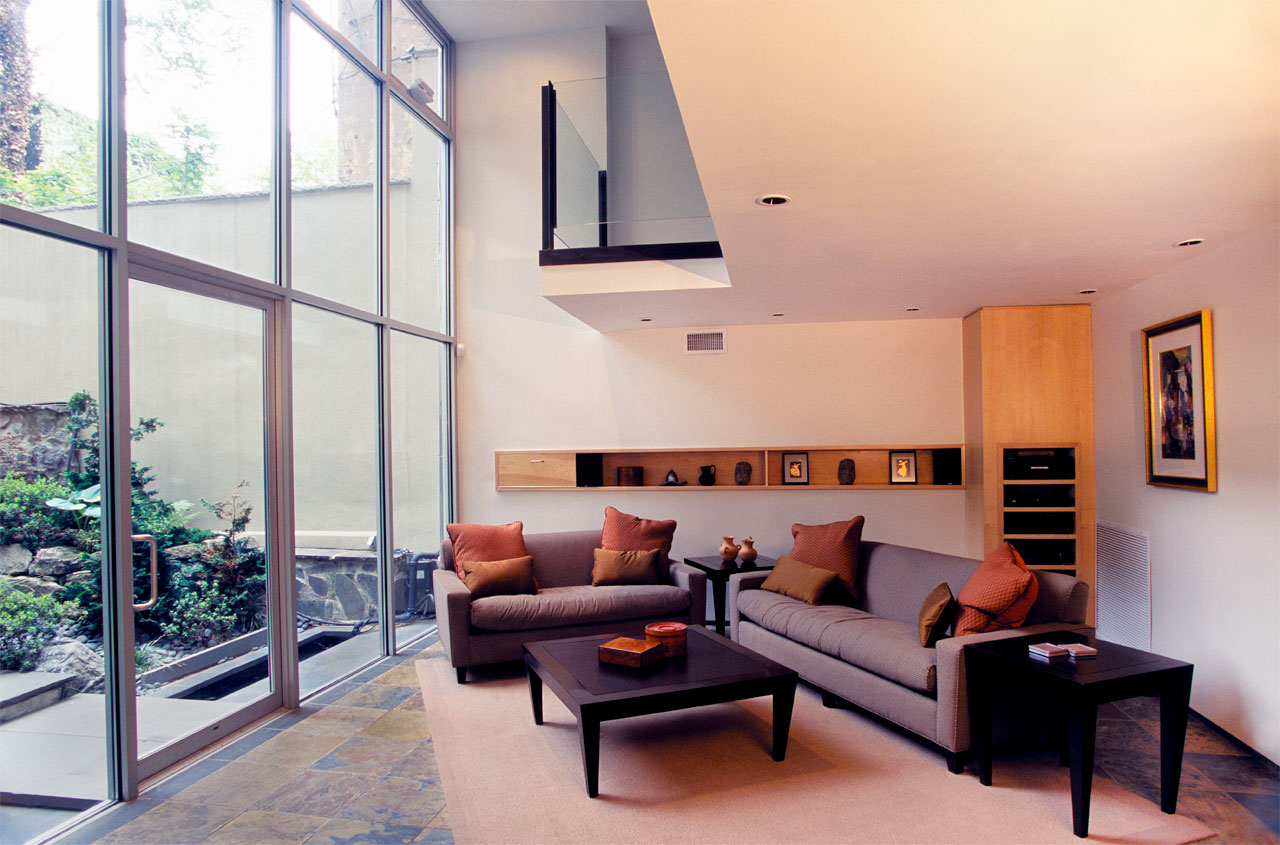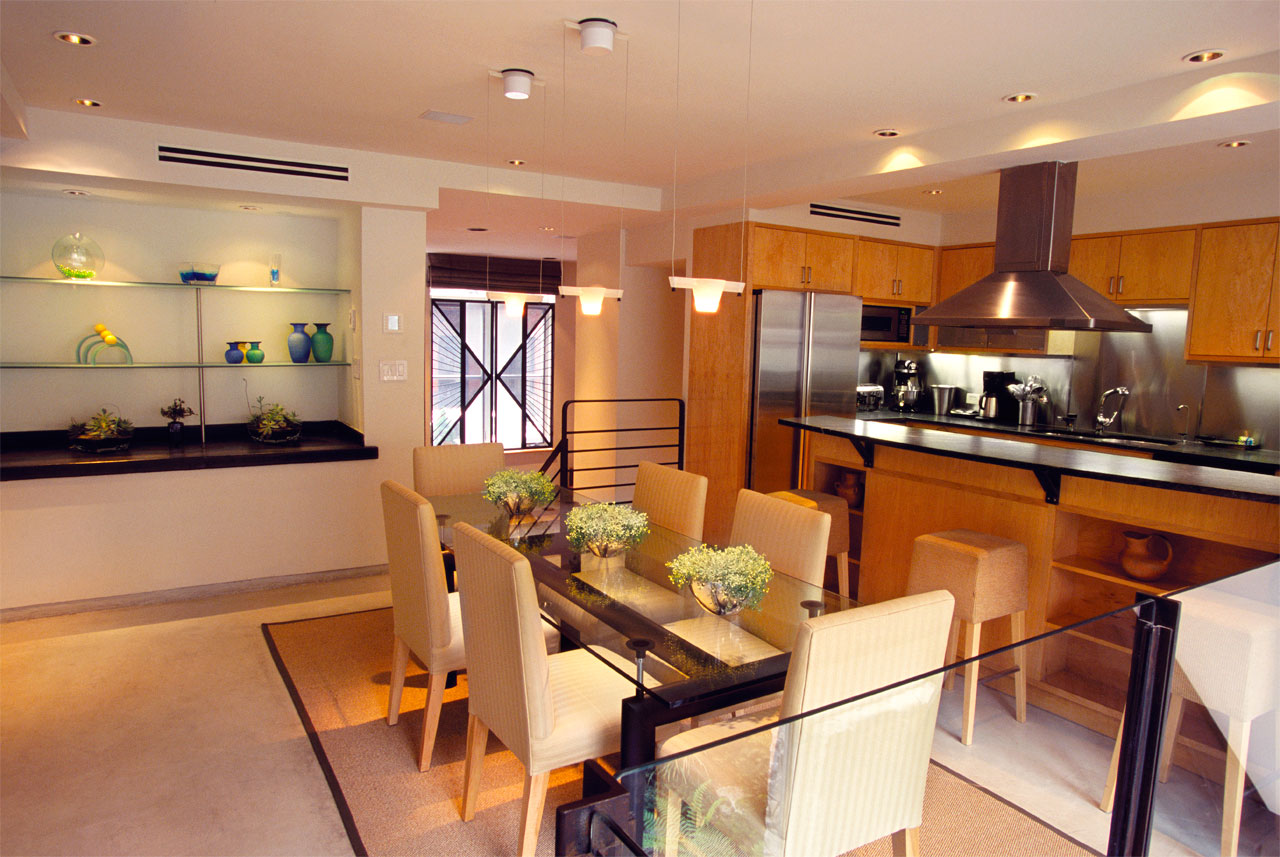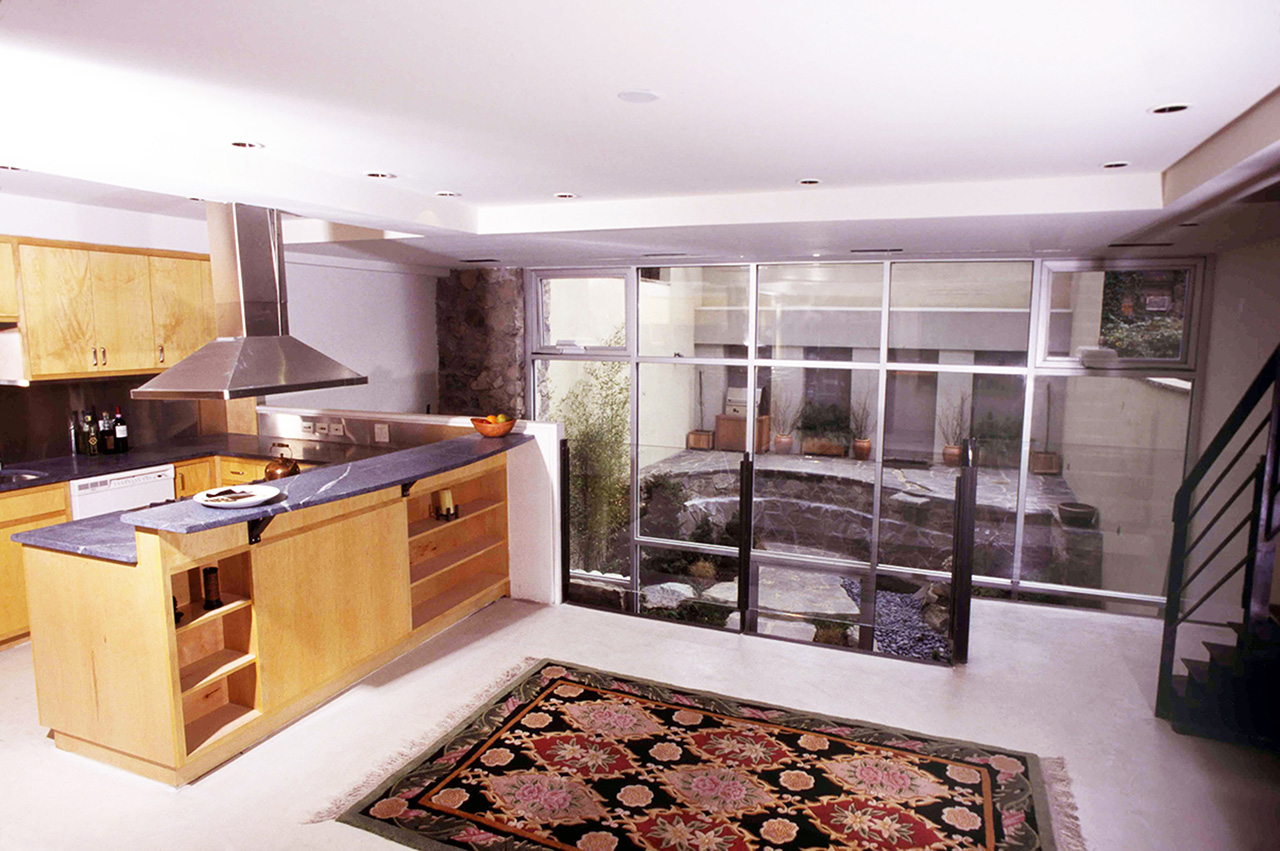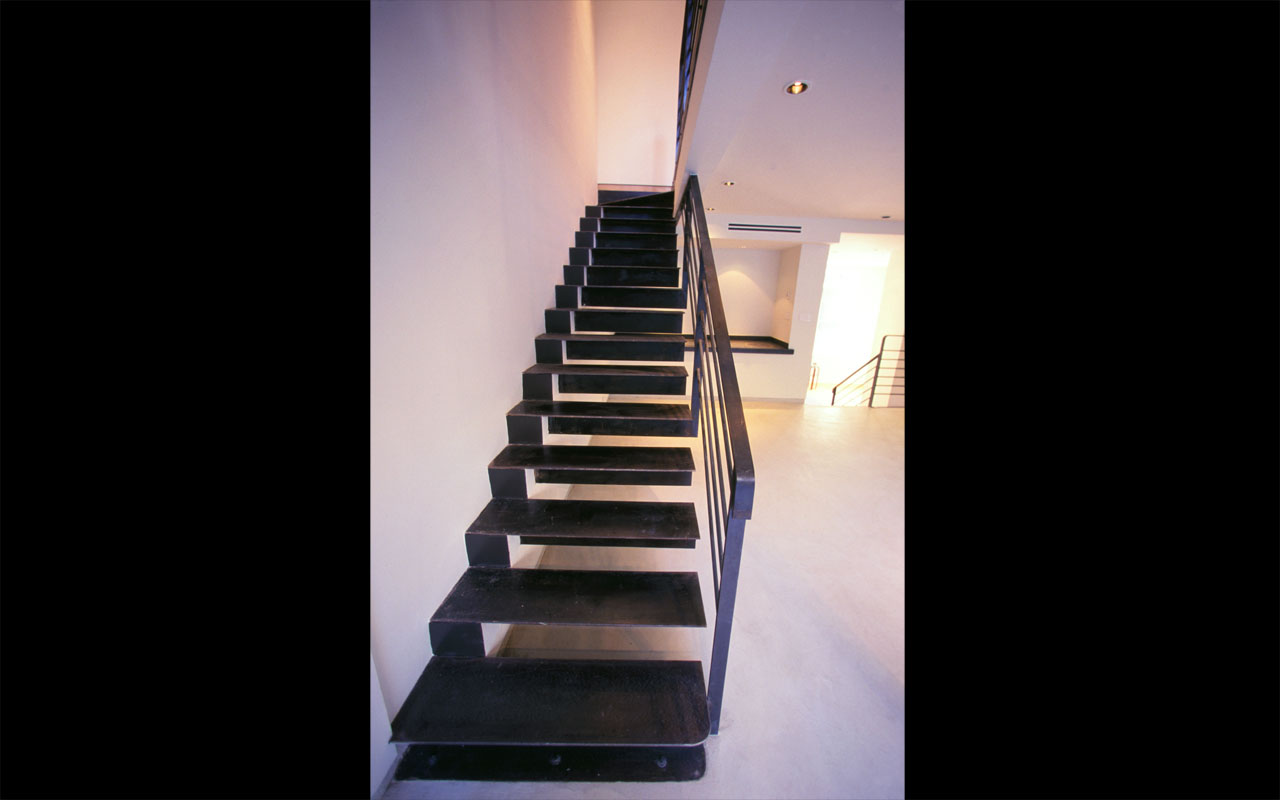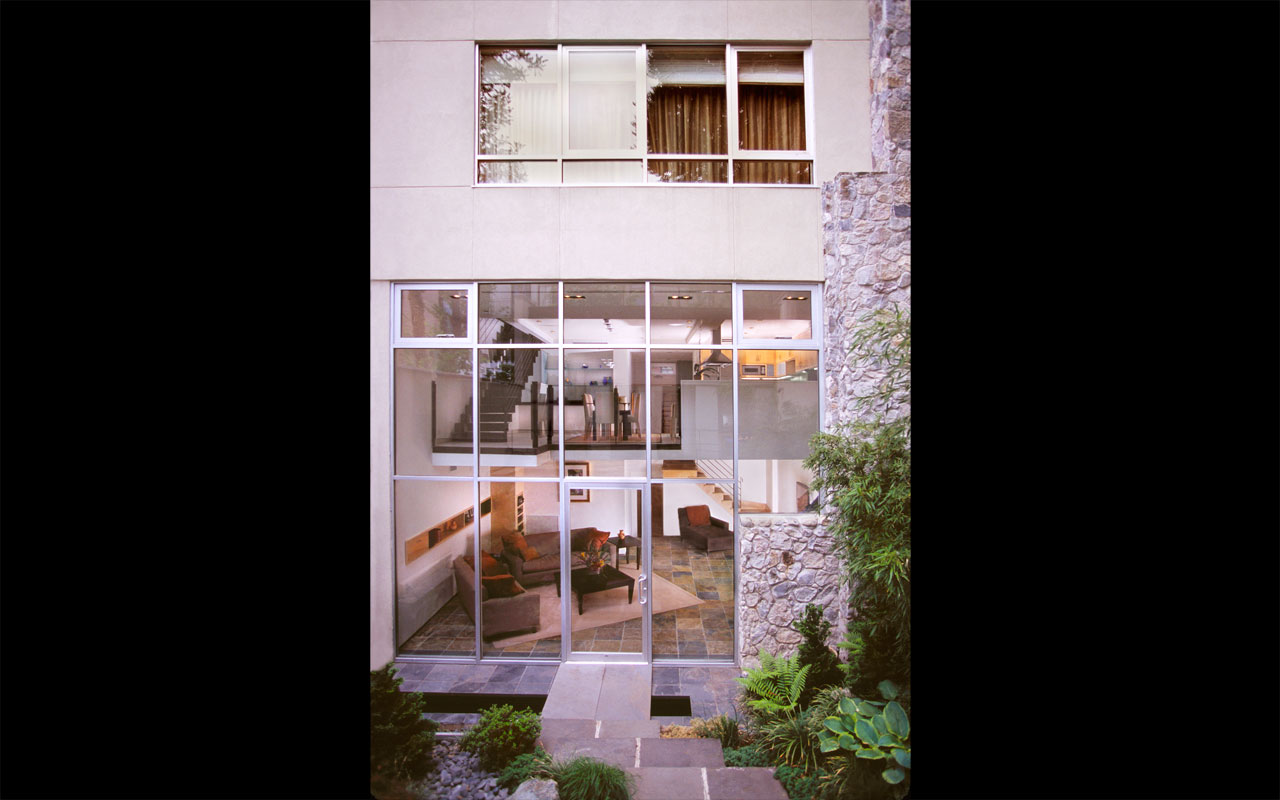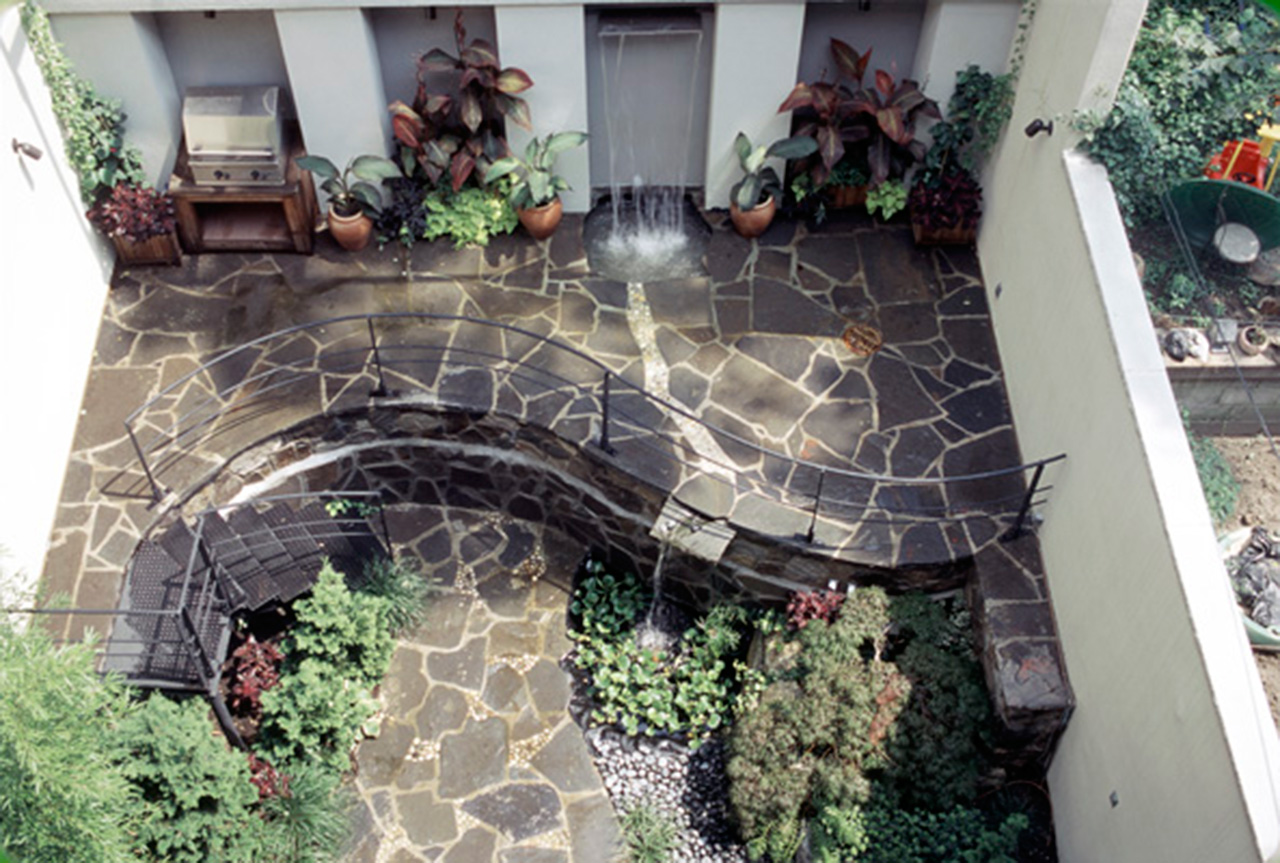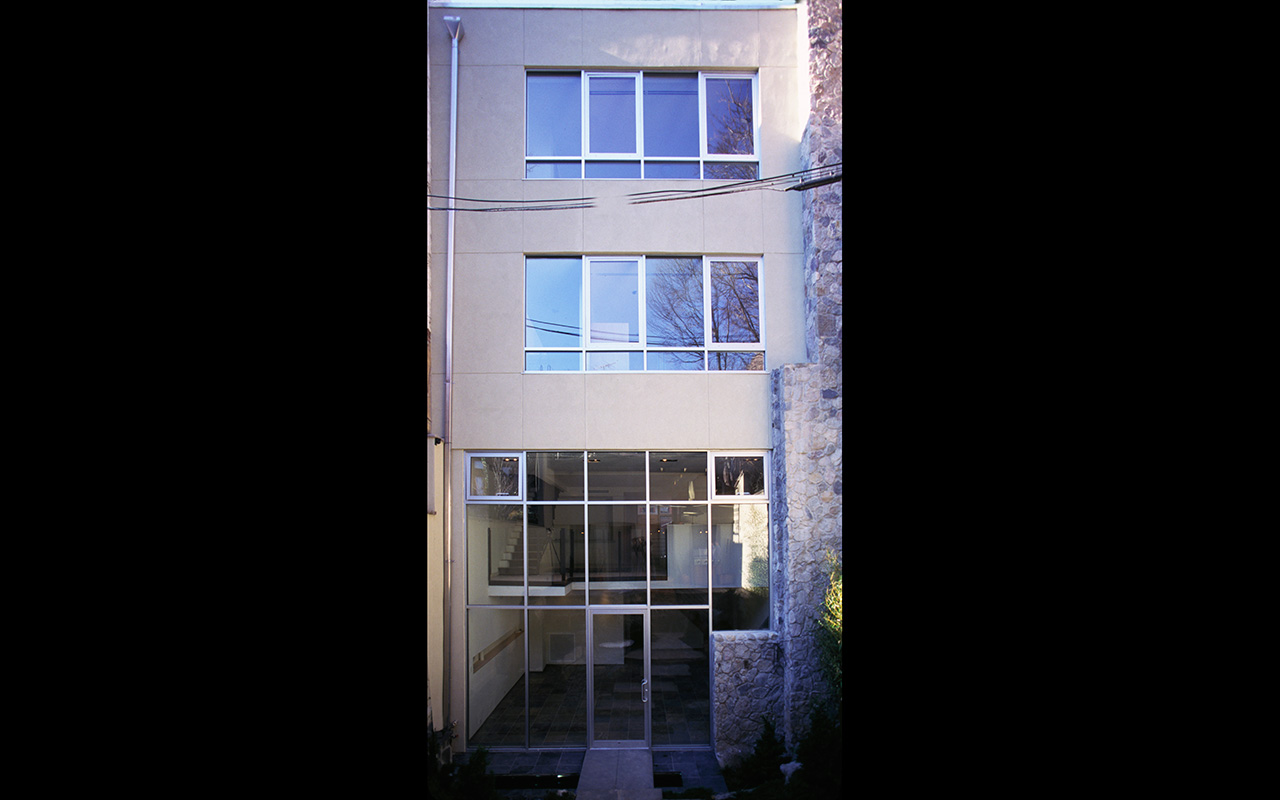

As the Owner and Architect of 47 Columbia Place my concept was for the new townhouse at to be an oasis in the city. This approach was based upon the issue that while the property resides on a quaint street in Brooklyn Heights it nevertheless, sits near a highway entrance ramp. This was achieved by orienting the house not towards the street but towards a rear courtyard garden. Architecturally, the primary living spaces are focused towards the garden through a 17’ double height glass wall. In contrast, the three garden perimeter walls, finished in buff colored stucco that matches the rear façade, are structurally and visually solid and clearly define the edges of the 25’ x 30’ garden as an outdoor room.
The main spatial effect is of a three-tiered landscape with its watercourse cascading from the garden into the living space of the house. Major excavation was required in the rear portion of the house and garden to create the double height living space due to zoning height limitations. The living room resides 7’ below street grade. From this low point the garden steps up as it rises up from the building to the original street level (of the earlier building’s slab on grade).
The walls of the original building which were built full to the lot were kept and reinforced to retain the higher earth of the surrounding yards. In addition, a structural colonnade had to be added to the rear wall to support a much higher grade on its opposing side. The rear portion of the existing concrete slab was kept since it was structurally tied into the rear wall. Paved in bluestone the slab was transformed into the upper patio. The two rear steel roof beams of the former factory were kept both as a memento to the former structure and to create a trellis for hanging vines over the dining patio. Consistently, other elements of the former building were also re-used within the house itself.
The rear patio was given a curved contour that bellies out on its right side to provide a generous outdoor eating area next to the waterfall. On its left side a metal stair curves into the concave portion of the upper patio level. In addition to its structural role the rear wall colonnade was designed to be the visual terminus to the garden. Housed in its four niches are a gas grill, planter boxes and a 30”copper waterspout. The waterspout cantilevered 6 feet off the ground is the origin point for the cascading watercourse.
This flow of water from the garden towards the living space emphasizes the idea of bringing nature into the house. The colonnade waterfall collects in the first pool adjacent to the outdoor dining table. A river stone overflow rivulet connects the first collecting pool to the lower waterfall and pool. While seated at the table one has the opportunity to view the garden from an elevated position as it descends downward towards the house. Cascading from a cantilevered bluestone the lower waterfall collects in another pool that is the source for the meandering overflow riverbed of Baja beach stone. This riverbed running along the stepped bluestone path terminates in front of the lower reflecting pool parallel the glass living room wall. A long trench drain concealed under the Baja stone is placed at the low point of the graded slope to collect overflow water from running into the living room during storm conditions. One enters the garden from the living room via a bluestone bridge over the 12’-0” long reflecting pool replete with carp and water lilies. The multi-colored slate living room floor with its earth tones suggests that the interior ground plane has been influenced by the outdoors.
